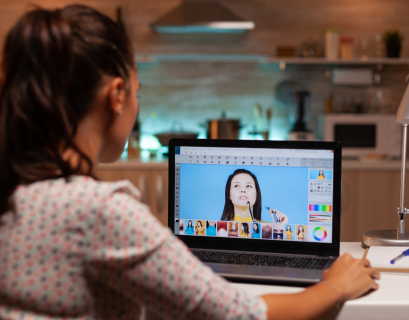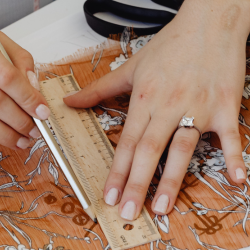From cartoons to commercials and social media to cinema, different types of animation are used everywhere to tell stories, explain ideas, and grab attention. It’s no longer just about entertainment—animation has become a powerful tool across industries like advertising, education, gaming, and design, with each type offering its own unique style and purpose.
In this blog, we’ll break down 10 popular types of animation—from the simplicity of 2D and the realism of 3D to the charm of stop motion and the impact of kinetic typography. You’ll also discover what each style is best suited for, how they’re made, and which platforms they shine on. Whether you’re a beginner, a business owner, or a budding animator, this guide will help you confidently choose the animation style that fits your needs.
Table of Content
- What is Animation?
- Different Types of Animation Explained
- Choosing the Right Type of Animation for Your Project
- Conclusion
- FAQs
- What are the most commonly used types of animation today?
- Which type of animation is best for explainer videos?
- Is 2D animation still relevant in the digital age?
- What is the difference between motion graphics and animation?
- Which animation type is most suitable for beginners?
- Can different types of animation be combined in one project?
What is Animation?
Animation film making is the process of creating animated movies by using drawings, computer graphics, sound, and other cinematographic effects. Animating the sequence of drawings, digital models, or clay figures to create an illusion of movement, animators give the images life—and that means opportunities to tell stories, educate, entertain, and advertise. It is broadly applied in a wide range of manners, having diversified forms of animation in multimedia as hand-drawn sketches to computer-aided production (e.g., with CGI), and has both own aesthetics and talents as one of the types of animation in multimedia. Through films, games, advertising, or digital interfaces, it appeals to people — making difficult topics utterly graspable.
Different Types of Animation Explained
Below, we explore ten popular animation styles, their techniques, and their best use cases. (Add Image for each type)
2D Animation
Definition & How It Works: 2D animation space through digital or hand-drawn images. Animators construct or model characters and backgrounds frame-by-frame, or they may utilize software like Adobe Animate or Toon Boom Harmony to automate the process. Cartoonists simplify and enhance the rotoscopic technique using bitmap or vector-based graphics or a combination of both. Due to the use of vector-based drawings, the representatives are highly scaleable and do not degrade in image quality
Common Uses: This has been exploited in exhibitions for example books and papers, marketing, and trailer editing for workers, due to its adaptableness and affordability. The simple, abstract fashion, is well suited for easy and appealing narrations.
3D Animation
Definition & Software Uses: 3D animation creates lifelike, three-dimensional visuals using software like Autodesk Maya, Blender, or Cinema 4D. Animators model, rig, and animate characters in a virtual 3D space, adding textures, lighting, and camera angles for realism.
Applications: Dominant in films (Toy Story), video games (The Last of Us), and architectural visualizations. Its immersive quality makes it ideal for complex narratives and realistic simulations.
Motion Graphics
What Sets It Apart: Motion graphics focus on animating graphic elements like shapes, logos, or text, often without narrative characters. Created using tools like Adobe After Effects, it emphasizes design and visual effects over traditional storytelling, and it is one of the types of animation in multimedia.
Common Use: Perfect for branding (e.g., logo animations), UI/UX design, and social media content. It conveys information quickly, making it popular for intros, ads, and data visualizations.
Stop Motion Animation
How It’s Created: Stop motion involves photographing physical objects (e.g., clay, paper, or puppets) moved incrementally between frames to create fluid motion. Techniques include Claymation, cut-out, and object animation, often crafted by hand or with tools like Dragon frame.
Examples: Used in films like Wallace and Gromit (Claymation) and educational shorts. Its tactile, handcrafted feel appeals to niche audiences and artistic projects.
Whiteboard Animation
Ideal Scenarios & Benefits: Whiteboard animation features hand-drawn illustrations on a white background, often simulating hand sketching in real-time. Software like Video Scribe automates the process. It’s ideal for corporate training, marketing, and explainer videos due to its simplicity and ability to break down complex ideas.
Benefits: Cost-effective, engaging, and excellent for educational content, as it mimics teaching visuals.
Rotoscoping Animation
Technique Overview: Rotoscoping involves tracing over live-action footage frame-by-frame to create realistic animated sequences. Modern tools like Adobe Animate or After Effects enhance the process. It blends live-action and animation seamlessly.
Popular Use: Common in visual effects for films (A Scanner Darkly) and music videos, adding stylized or surreal elements to real footage.
Typography Animation (Kinetic Typography)
How Text Comes to Life: Typography animation animates text to convey emotion or rhythm, often synchronized with audio. Created using After Effects or similar tools, it emphasizes font movement, color, and effects.
Common Use: Prevalent in music videos, title sequences, and ads (e.g., kinetic typography in lyric videos), where dynamic text enhances mood and messaging.
Traditional (Hand-Drawn) Animation
The Classic Technique: Traditional animation involves hand-drawing each frame, often digitized today using tablets and software like Photoshop. It’s labor-intensive but offers unmatched artistic control.
Examples: Seen in early Disney films (Snow White) and anime (Spirited Away). Its expressive style suits emotional storytelling and artistic visions.
Cut-out Animation
Digital vs. Physical Techniques: Cut-out animation uses flat, pre-made shapes (paper or digital) moved to create motion. Physical cut-outs are photographed, while digital versions use software like Toon Boom. It’s simpler than frame-by-frame drawing.
Unique Aesthetic: Its collage-like look suits stylized projects, like South Park or indie films, offering a quirky, accessible charm.
Experimental/Hybrid Animation
Mixing Mediums: Experimental animation blends techniques (e.g., 2D, 3D, live-action, or stop motion) or uses unconventional tools like sand or paint. It pushes creative boundaries, often using software like Blender or After Effects for hybrid effects.
Creative Applications: Common in art installations, short films, and avant-garde storytelling, appealing to audiences seeking unique, thought-provoking visuals.
Choosing the Right Type of Animation for Your Project
Selecting the ideal animation style depends on several factors:
Project Goals and Audience
Align the animation type with your objectives and target audience. For example, whiteboard animation suits corporate training for its clarity, while 3D animation captivates gamers with immersive visuals. Consider whether your audience prefers stylized (e.g., 2D for kids) or realistic (e.g., 3D for architectural clients) aesthetics.
Budget and Timeline Considerations
Budget and deadlines influence choices. Traditional and 3D animation are costly and time-intensive, while motion graphics or whiteboard animation are quicker and more affordable. Stop motion requires physical setups, impacting timelines. Plan resources early to avoid delays.
Platform and Format Requirements
Consider where the animation will appear. Motion graphics shine on social media due to their brevity, while 3D suits cinematic releases. Ensure compatibility with platform specs (e.g., aspect ratios for Instagram or resolution for TV).
Also Know About: Advantages and Disadvantages of Animation
Conclusion
Animation offers diverse styles to suit any project, from the timeless charm of traditional hand-drawn to the cutting-edge realism of 3D. By understanding each type’s strengths—whether it’s the affordability of whiteboard animation or the artistic freedom of experimental hybrids—you can choose the perfect fit for your goals, audience, and platform. Animation continues to evolve, blending creativity and technology to captivate and communicate effectively.
FAQs
1. What are the most commonly used types of animation today?
2D, 3D, and motion graphics dominate due to their versatility, with 2D and motion graphics leading in digital marketing and 3D in films and games.
2. Which type of animation is best for explainer videos?
Whiteboard and 2D animation are ideal for explainer videos, offering clear visuals and cost-effective production for educational or marketing content.
3. Is 2D animation still relevant in the digital age?
Yes, 2D animation remains relevant for its affordability, stylized appeal, and widespread use in TV, ads, and online content like explainer videos and indie games.
4. What is the difference between motion graphics and animation?
Motion graphics focus on animating non-narrative elements like text or shapes for branding or UI, while animation typically involves characters and storytelling (e.g., 2D or 3D narratives).
5. Which animation type is most suitable for beginners?
Whiteboard or motion graphics are beginner-friendly, thanks to accessible software (e.g., VideoScribe, After Effects) and simpler workflows compared to 3D or traditional animation.
6. Can different types of animation be combined in one project?
Yes, hybrid animation combines styles like 2D and 3D or stop motion and live-action, creating unique visuals for films, ads, or experimental art projects.

























